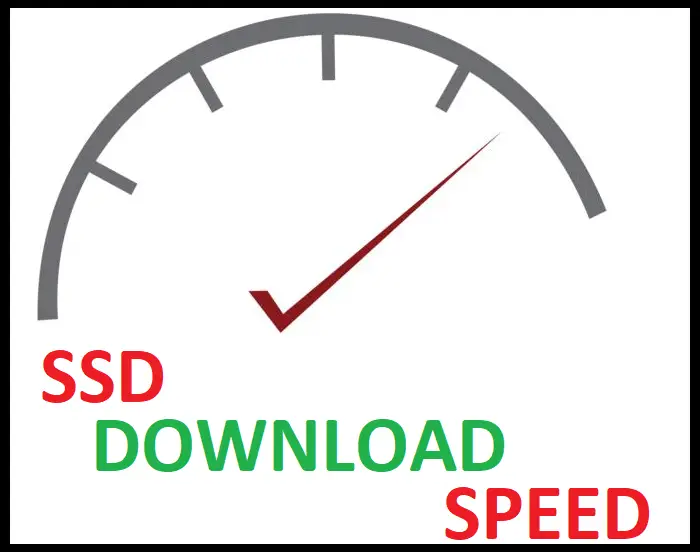Smart home monitoring has become an increasingly popular way to keep our homes secure and offer us peace of mind.
I remember when I first started looking into it and got immediately fascinated by the idea.
By utilizing modern technology, home security has been transformed, enabling us to monitor our homes in ways that were hard to imagine just a few years ago.
From controlling lighting and alarms to receiving real-time notifications about unusual activity, smart home monitoring has revolutionized the concept of protection.
Table of Contents

In my experience, one of the major benefits of smart home monitoring is the ability to remotely access the system from anywhere.
That means that even if I am on vacation, I can still monitor and control my home’s security, giving me a sense of relief.
What’s also great is that these systems are often customizable, so I can choose which aspects of my home need the most attention, whether it’s the front door, windows, or even specific rooms.
Of course, adopting such technology can seem overwhelming at first, but I found that it’s actually quite user-friendly and intuitive.
If you’re considering smart home monitoring, I encourage you to explore the different options available and experience the reassurance and convenience it can provide.
After all, there’s nothing quite like knowing your home is safe and secure, no matter where you are.
Understanding Smart Home Monitoring
The Role of Sensors and Devices
In my smart home monitoring, I rely on a combination of sensors and devices to gather information about my home’s environment.
These devices can include smart thermostats, security cameras, motion detectors, and more. I use them to track things like temperature, humidity, and whether doors or windows are open.
The data collected by these sensors helps me make informed decisions about my home’s energy usage, security, and overall comfort.
Alerts and Notifications
One essential aspect of smart home monitoring is receiving alerts and notifications. When something unusual happens, like a window breaking or an unexpected temperature change, I receive a notification on my phone.
These alerts allow me to react quickly if there’s a potential issue in my home. For instance, if the security system detects an intrusion, an alarm is triggered, and I receive a push notification on my smartphone.
This way, I can assess the situation and take appropriate action, such as calling for help or deactivating a false alarm.
Professional vs. Self-Monitoring
When it comes to smart home monitoring, there are two main options: professional monitoring and self-monitoring.
With professional monitoring, a third-party company watches over my home and receives alerts when any of my sensors are triggered.
If there is an issue, they will contact me to confirm the situation and, if necessary, dispatch emergency services.
On the other hand, in self-monitoring, I am responsible for keeping an eye on my home, responding to notifications, and taking action when needed.
While this can save me money, it also requires more attention and effort on my part. Ultimately, I need to weigh the costs and benefits of each approach to decide which one is best for my specific needs and lifestyle.
By using a combination of smart devices, sensors, and monitoring methods, I can create a more secure and energy-efficient home.
Embracing smart home monitoring has allowed me to gain better insight into my home’s environment, leading to increased peace of mind and overall comfort.
Setting Up Your Smart Home System

Initial Setup and Installation
When I decided to set up my smart home security system, the first thing I focused on was the initial setup and installation process.
It involved getting all the necessary devices, such as motion sensors, cameras, and smart locks. I laid out each component and went step-by-step, following the provided user manual.
I found that some systems, such as Abode, make the DIY installation user-friendly and even provide online tutorials to make the process smoother.
I mounted the devices at appropriate locations throughout my home – motion sensors in the hallway, cameras in the living room, and so on.
The wireless setup allowed me to easily rearrange the devices, ensuring there were no dead zones in my smart home coverage.
Connecting to Apps and Wi-Fi
The next thing I did was to connect the smart home security system to my home Wi-Fi network. This allowed me to control the devices remotely and receive alerts when I wasn’t home.
I found that typically, smart home systems have their respective smartphone apps, which makes it convenient to manage the entire system.
As I connected my system to Wi-Fi, I ensured that I used a strong, secure password to prevent any unauthorized access.
I also set up the system’s app on my smartphone, which gave me the ability to easily customize settings and receive notifications about any potential security breaches.
Smartphone Integration
One of the most attractive aspects of setting up a smart home system is the seamless integration with a smartphone. After I set up my system, I could quickly check in on my home security using the system’s smartphone app.
These apps offer features like real-time video streaming, temperature control, and even the ability to remotely lock or unlock the doors.
Some systems with energy-saving features also provide advice on reducing energy consumption through the app.
By integrating my smart home system with my smartphone, I had more control and peace of mind knowing my home was being monitored 24/7 by both myself and a professional monitoring service.
With these steps taken care of, my smart home monitoring system was up and running. The process was easy and enjoyable, and the benefits of a secure, connected home have proven to be invaluable.
Key Features of Top Smart Home Systems

One of the most important aspects of smart home monitoring is choosing a system that fits your needs and has great features. In this section, I will discuss some key features of top smart home systems to help you make an informed decision.
Integration with Smart Assistants
A crucial aspect of any smart home system is its ability to integrate with popular smart assistants like Amazon Alexa and Google Assistant.
This allows for seamless control of your system and ensures that your devices work together effectively.
Some popular home security systems that offer seamless integration with both Alexa and Google Assistant include Vivint Smart Home, Ring, and Simplisafe.
I personally find it quite convenient to control my smart home system with voice commands. It saves me time and makes things more accessible.
Video Surveillance and Storage
Another key feature of smart home monitoring is video surveillance, which offers peace of mind by allowing you to monitor and protect your home.
Top systems such as Wyze and Arlo Home Security System offer high-quality video footage along with excellent storage options.
Some systems allow you to store videos in the cloud, ensuring they remain accessible, whereas others offer local storage for privacy concerns.
Here are a few examples of storage options for different smart home security systems:
| System | Cloud Storage | Local Storage |
|---|---|---|
| Wyze | ✓ | ✓ |
| Arlo | ✓ | ✓ |
| Vivint Smart Home | ✓ |
As you can see, cloud storage is quite popular among smart home systems, while some of them offer local storage as well.
Top Picks for Smart Home Security Systems
I have listed some of the best smart home security systems below based on my research and experience:
- Ring: Known for its easy installation and versatile camera options, Ring is a popular choice for many homeowners, including myself.
- Wyze: Offers high-quality video surveillance and various sensor options at an affordable price point.
- Vivint Smart Home: A comprehensive system that provides excellent integration with smart assistants and professional monitoring services.
- Simplisafe: Highly customizable and easy to use, Simplisafe includes features such as video surveillance, motion detection, and environmental monitoring.
- Arlo Home Security System: This system offers excellent video quality, lengthy battery life, and various storage options.
In this section, I have covered vital features to consider when choosing a smart home monitoring system.
From integration with smart assistants to video surveillance and storage options, these features should help you choose the best system for your needs.
Remember, the most important thing is finding a system that meets your specific requirements and preferences.
Cost Considerations and Subscription Plans
Understanding the Costs of Smart Home Monitoring
When considering a smart home monitoring system, it’s important to understand the costs involved.
Monthly subscription fees for professional monitoring services can vary widely, and you’ll want to make sure you’re getting the best value for your money.
Many smart home security systems offer 24/7 monitoring included in their packages.
This means that the company will have a dedicated team monitoring your home around the clock and alerting you and the appropriate authorities if anything seems off.
On the other hand, some systems also offer self-monitoring options, where alerts are sent directly to you, and you’ll be responsible for contacting the authorities if needed. This option typically has no monthly fees.
Here’s a quick breakdown of some of the costs you may encounter:
- Upfront costs: This includes the purchase of the equipment such as cameras, sensors, and control panels. Some systems require an upfront investment, while others may offer discounted or free equipment with a contract.
- Installation fees: Although many smart home security systems are DIY and don’t require any professional installation, there are still some companies that offer or require professional installation, which adds to the overall cost.
- Monthly subscription fees: These fees typically cover professional monitoring and access to a mobile app that allows you to manage and monitor your security system remotely.
Choosing the Right Monitoring Plan
Now that you have a better understanding of the different costs associated with smart home monitoring, it’s time to choose the right plan for your needs.
- Determine your budget: Consider how much you are willing to spend on the system, both upfront and on a monthly basis. Keep in mind that investing in a good security system can potentially save you money in the long run by preventing theft or damage to your home.
- Evaluate your needs: Think about the level of protection you want for your home. If you’re comfortable managing and responding to alerts on your own, a self-monitoring option might be suitable. However, if you prefer the peace of mind that comes with professional monitoring, you’ll want to factor that cost into your budget.
- Compare plans and features: Once you have a sense of your budget and needs, it’s time to explore different companies’ offerings and compare their plans and features. Some companies, like SimpliSafe, offer multiple plan options, such as their Standard plan for $19.99 per month or their Interactive plan for $24.99 per month, each with different features and levels of coverage.
By taking these steps, I’m confident that you’ll be able to find a smart home monitoring plan that provides both the protection and peace of mind you need, while also fitting within your budget.




